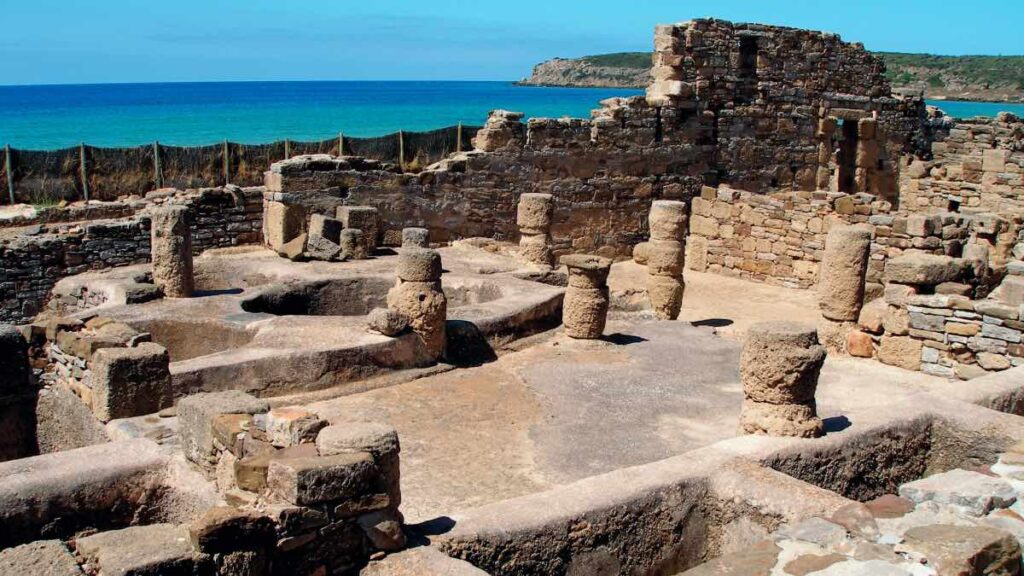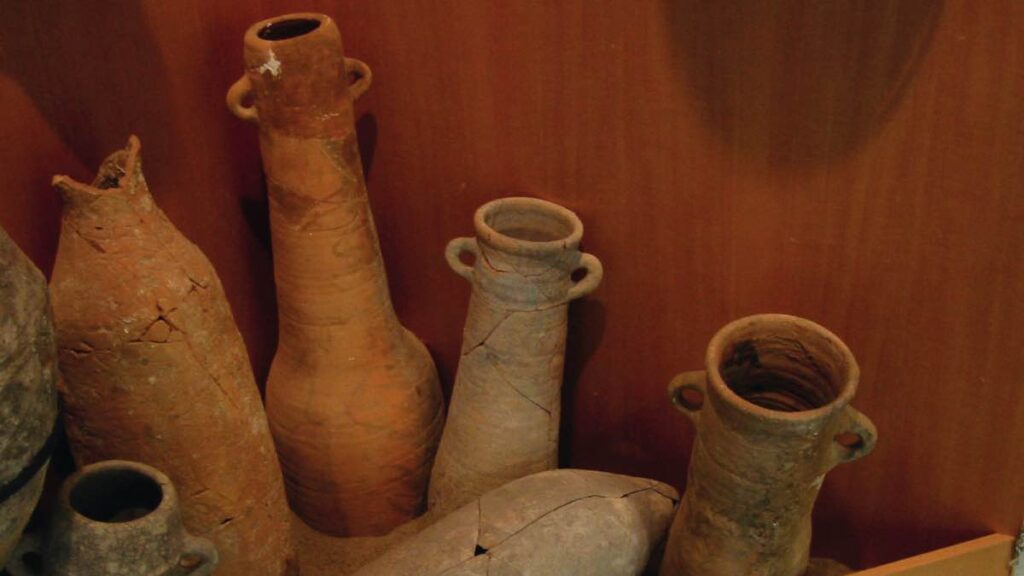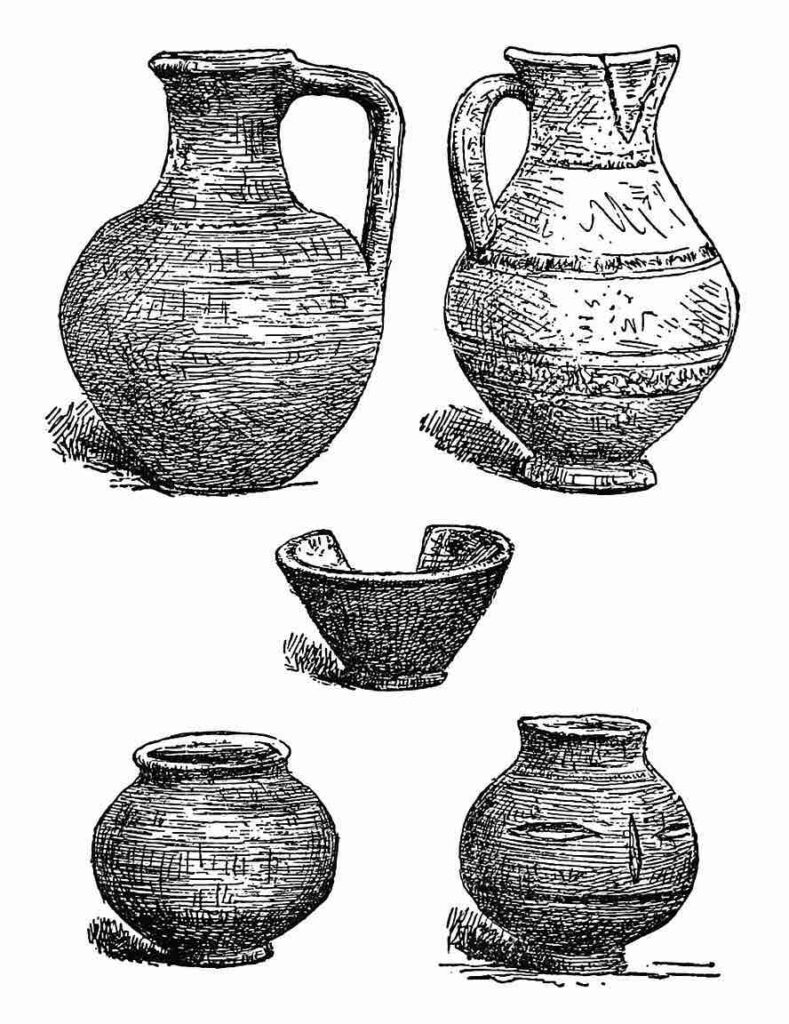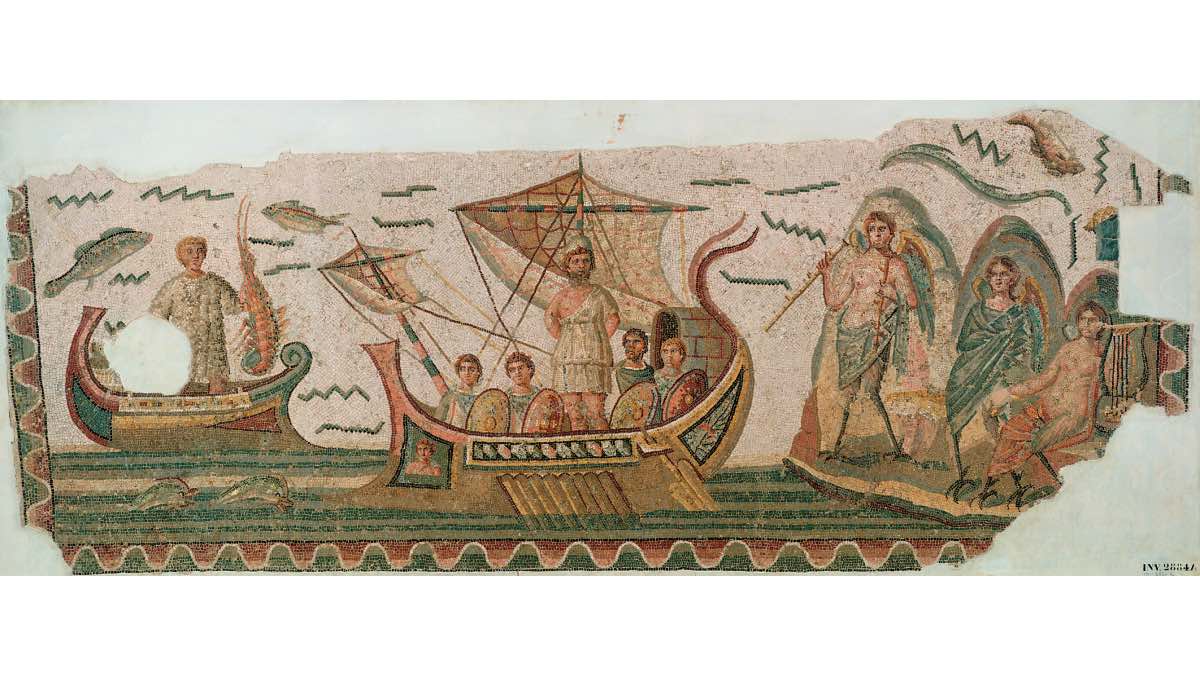Click here to read the Spanish version.
In the insula of San Paolo, located in the Roman district of Regola, there is a large collection of vessels and amphorae that were once used to transport clams, oysters and mussels. They could not be reused as there was no bleach or chemical soaps at that time. Some of them contained garum or liquamen, a fish liquor or sauce – extracted from live mackerel or anchovies – macerated with salt, and which could have a nauseating smell that contrasted with an exquisite and sophisticated taste.
Its essence came from the entrails and was made using a complicated technique that involved a lot of time and huge quantities of anchovies or small sardines to obtain this precious liquid gold, which began to be used in ancient Rome and is nowadays requested in the restaurants of the best Michelin guides.

The original recipe is claimed by the capital of the ancient world. It was also used in some of the territories conquered after the Punic Wars, such as Carthage (an ancient city in North Africa, in present-day Tunisia, some seventeen kilometres northeast of the country’s capital), as well as along much of the coasts of the Iberian Peninsula. Chronicles of the period say that it may have come from Eastern Classical Greece or Mesopotamia, and that it fell into disuse in most of these territories during the Middle Ages. Curiously, its tradition was revived on the Amalfi Coast by some of the monastic groups present there, specifically in Cetara, south of Naples. Every year, this tiny place celebrates the world festival of garum, which they call ‘colatura di alici’ (anchovy sauce).
From Asterix to Tacitus
In Italy, it was often used to dress salads, vegetables and meats, especially chicken and lamb. Some of the country’s most prestigious chefs have taken up the baton by revisiting it, giving it greater versatility. This is the case of Davide Oldani, the prestigious chef who invented pop cuisine. He has always emphasised an interesting key that explains the tremendous success of this sauce: “People love craftsmanship in the kitchen. For that it is necessary to recover patience, the craft, the use of the hands. Tradition, raw materials, meticulousness…” Exactly! In the time of the metaverse, when it was thought that a magic pill would take over our plate, garum suddenly appears to reconsider whether all evolution brings progress.
The curious thing is that garum was the mayonnaise, ketchup, mustard or Caesar sauce of the time and was already spoken of by Tacitus – the totem of Latin writing – or the writer and politician Petronius, presumed author of The Satiricon during the time of Nero, who deliberately abused garum in his many feasts and gastronomic banquets that took place in the innumerable bacchanals. Not to mention the mythical comic strip Asterix in Italy, where several pots bear the inscription Garum di lupo.

Many centuries have passed, but this divine sauce, as some defined it at the time, has not ceased to be the subject of study and analysis. In fact, the nutritionist Giuseppe Nocca in his book Garum. Produzione ecosostenibile e filiera alimentare della salsa di pesce nell’antichità, speaks of an avant-garde technique that could be adapted to any pocket depending on the quality of the Mediterranean fish, abundant in tuna, sardines, salmon and eels. He says that even then it was already eco-sustainable food, and that the Romans made it a pillar of their culture, their cuisine and their life. “Although the production technology was Phoenician, the origin of the sauce comes from the East. The name derives from the Greek garon,” he says in the book. It also appeared in the cooking manual De re conquiaria used by Apicius (imperial cook) to prepare banquets. Pliny the Elder recounts it, who adds that in many cases the price was higher than the price of a woman’s perfume at the time.
Pompeii and Cadiz
There is little doubt about the quality of garum in antiquity. In the house of Paquius Proclus, an important figure of the late Pompeian period, an amphora – sealed with iconic Pompeian red – was found with the liquid that had been cured for three years. It was like wine, it got better with age.
Today nothing has changed. And the fact is that the totemic city buried by Vesuvius is linked by an umbilical cord to Cadiz, where the biologist from Extremadura Álvaro Rodríguez – supported by a large group of collaborators – has found the perfect formula for garum imperial. He has been marketing it for years with the company Flor de Garum, which produces 100 ml bottles at a price of 28 euros each, as each one is made with several kilos of anchovies and Swiss goldsmithing and precision work.

In addition, today as then, there is a need for a wide availability of fish that transits in the late spring under the coast, organic materials to make fishing nets, ease of placing the boats and a presence of rocky substrates to place the vivaria, a type of tubs to dry the live fish bathed in salt.
This is the only way to understand the price of this miracle, once on the tables of the most opulent snobbish societies, as analytical data confirm that oily fish provides omega-3 and is rich in sodium and vitamin B12. Moreover, its taste added important microelements to a diet poor in animal protein. Not everyone could, but everyone wanted this gourmet product to eat. Not only for its taste and benefits, but also for its appearance. Some of that has also been inherited today…

